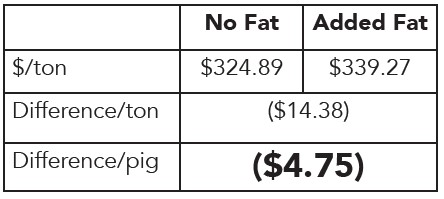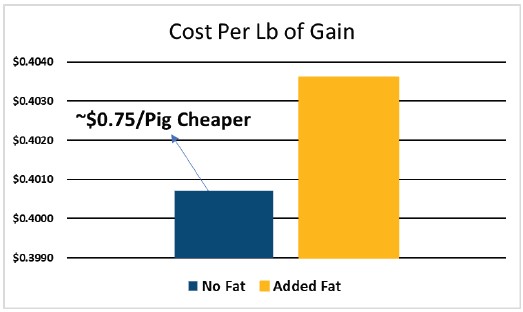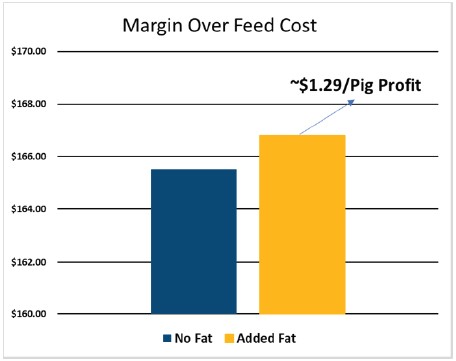 There are several ways to evaluate feed cost and feed performance in wean-to-market pigs. Each method can provide a very different answer for the producer on what is the “BEST” way to feed a pig. In a perfect world we find the ideal marriage between biological performance and feed cost. However, the equation isn’t so simple and in fact it may change throughout the year as input prices change or the pig market fluctuates.
There are several ways to evaluate feed cost and feed performance in wean-to-market pigs. Each method can provide a very different answer for the producer on what is the “BEST” way to feed a pig. In a perfect world we find the ideal marriage between biological performance and feed cost. However, the equation isn’t so simple and in fact it may change throughout the year as input prices change or the pig market fluctuates.
We generally see 3 basic economic evaluations of feed cost: cost per ton, cost per lb of gain, and margin over feed cost (MOFC). The following scenario shows how each metric can provide a very different answer on the most appropriate feeding method.
Cost per ton
Cost per ton of feed is a simple way to look at feed cost. For example, if we add 30 lbs of fat to the diet at $0.60/lb we clearly see an increase in feed cost per ton compared to a diet with no fat. I like a good deal, so given this limited information, I would likely choose the cheaper of the two diet sets which would tell me I am saving ~$4.75/pig to NOT feed fat. However, this data fails to account for the biological response of pigs when fed fat and market conditions. 
Cost per pound of gain
Analyzing feed cost per pound of gain is a better choice when making the decision to add fat to the diet or not. Our internal research data would tell us that added fat will increase Average Daily Gain (ADG) and decrease (improve) Feed to gain (F:G); therefore, we have begun the process to more accurately account for the biological response of the pig. It still appears advantageous to feed no fat, to the tune of ~0.75/pig, but we have not yet accounted for market conditions.

Margin over feed cost
MOFC paints a picture in high definition that allows us to achieve the perfect balance between biological performance and economic outcome. It takes into consideration market pricing and allows us to evaluate if the cost of added fat is offset by the income from improvements in gain and feed efficiency. In this scenario, the added cost of fat would not be beneficial when looking at cost per ton or cost per lb of gain. However, when we analyze MOFC, we find that we were leaving $1.29/pig on the table or $3,096 on a group of 2,400 head by not using fat.

As the market changes, understanding the biological response of pigs under different conditions and nutrition programs is critical when paired with ingredient cost and the hog market. Pushing pigs too fast by feeding a high energy summer diet too early may mean the difference between hitting the May contract instead of the June. On the other hand, not feeding a high energy summer diet early enough may push hogs that could have marketed in August into the October market. In addition, it may be more profitable to feed lower energy, lower cost diets throughout the winter when hog markets are low even though pigs will knowingly have poorer ADG and FG as a result of the lower energy diet. Margin over feed cost allows us to find the “BEST” balance between biological response and economic outcome.
By: Jacob Koepke, Nutrition Account Manager Pipestone Nutrition
